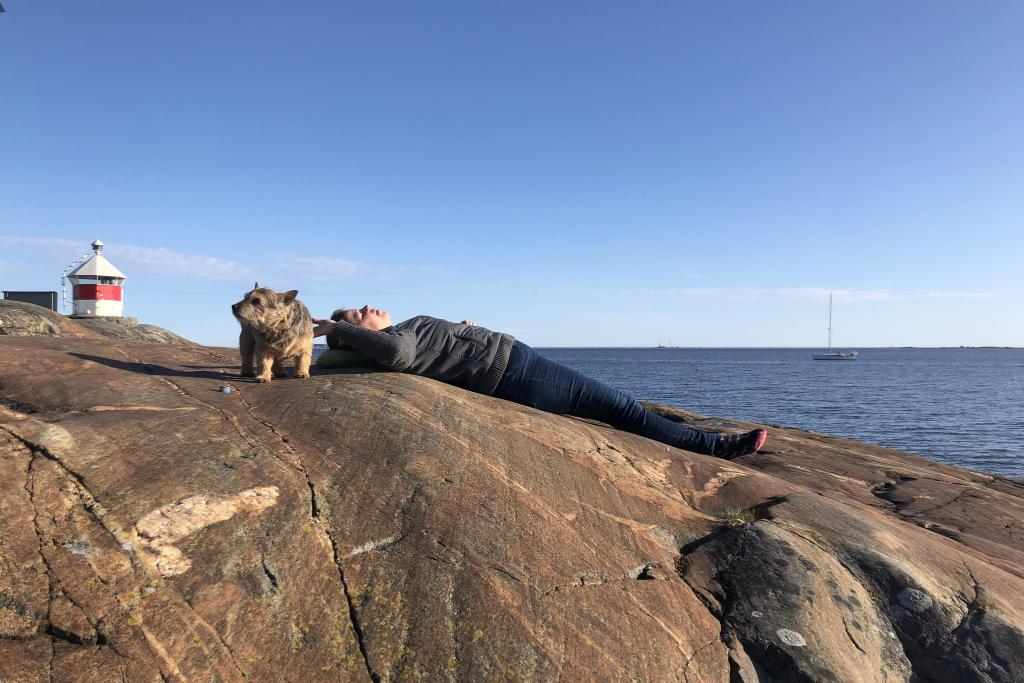
The Helsinki Treasures survey by the Helsinki City Museum asked respondents to name places that they think belong to the cultural environment of Helsinki. History, nature and the sea emerged as thematic “megatrends” characterising cultural environments. Around 300 individual places were named and a total of 1,072 people responded.
Last summer, the Helsinki City Museum surveyed the city residents’ views on the cultural environment of Helsinki. The Helsinki Treasures survey asked respondents to name places that they think belong to the cultural environment of Helsinki. The respondents had to give reasons for their choices and were also asked to share stories relating to these places. History, nature and the sea emerged as thematic “megatrends” characterising cultural environments. Around 300 individual places were named. The survey was open from 1 June to 31 August 2021, and a total of 1,072 people responded.
The materials are abundant and quantitatively extensive and consist of multiple layers. The responses included mentions of buildings (outdoor and indoor spaces), landscapes and views, yards and parks, rocks, shores, forests and meadows, as well as moods and memories. The analysis of the materials looked at what kind of places the city residents perceive as a cultural environment and what constitutes the experience of the cultural environment.
The cultural environment is shown in the materials as a large entity. The city residents identified valuable sites, but also sites related to the everyday environment. The significance of local nature and the sea and shores was mentioned in a number of responses. The experience of the intertwining of natural and cultural environments was also evident.
The places named were partly expected and familiar. Among those mentioned were Senate Square, Hietalahti, Art Nouveau buildings, Suomenlinna and manors and manor parks. Places that have previously provoked public discussion were strongly highlighted in the materials: those mentioned most often were former Malmi Airport, Lapinlahti, Kivinokka, Seurasaari baths, Stansvik and Riistavuori. Newer places and perspectives also emerged, such as Aurinkolahti, Tilkanniitty, Siltamäki park and Pitkäsilta wooden piers. Individual local sites in residents’ everyday environment were mentioned from different parts of the city, including Ruutinkoski (Haltiala), Ruoholahti canal, Päitsitie, Ourit island and Tattarisuo.
Caption: Sites on the map. A total of 299 different sites were marked on the map. General references, such as “the shores of Helsinki”, were not included on the map. Larger areas, such as city districts or parks, were marked on the map according to the centre of the area. Image: Amanda Halme and Niemelä.
History, nature and the sea emerged as thematic “megatrends” characterising cultural environments. The long and well-known history of the place was often the most important argument for why it should be regarded as part of the cultural environment, even though newer, still developing or recently forgotten sites were also mentioned. Respondents identified a number of important built heritage sites and buildings of value that already have protected status or should be protected. History was seen in the materials as a building block of identity and one’s everyday life. The intrinsic value of the cultural environment was also highlighted. Views, landscapes, buildings or, for example, parks were assessed as unique sites specific to Helsinki. People were proud of Helsinki but, at the same time, raised concerns about its survival. Helsinki’s special historic features and general characteristics were also strongly featured in the stories.
Natural sites and values were emphasised in the data in a significant way. Nature is seen in the materials as a lifeline, a respite and refuge from the built environment and the intense rhythm of everyday life. According to the responses, outdoor activities in nature (jogging, walking, skiing, etc.) as well as other activities in nature (hiking and picking berries and mushrooms) are also an integral part of the urban lifestyle and everyday life. The sea is also intertwined with the Helsinki lifestyle; the presence of the sea is visible in the everyday lives of the residents as a landscape and a visual element.
Childhood and memories of childhood appeared in the stories of many respondents. On the other hand, the places mentioned have also provided a setting for the intergenerational chain and interaction. In their memories, many respondents returned to shared family experiences they had had as children. Correspondingly, they are now bringing their own children and grandchildren to places they consider important and significant. The stories also convey the fact that an attachment to a place often arises as a result of one’s residential history.
The survey was carried out as part of the data collection included in the preparation of the Helsinki’s cultural environment programme. The programme is being prepared in cooperation between residents’ communities and authorities, while at the same time gathering information that explains the development history of Helsinki’s environments and the identity of the regions.
The survey was carried out as an open online survey on the Questback platform. The survey was distributed through the websites and social media of the Culture and Leisure Division of the City of Helsinki and the City Museum.
Photo above: Sini Tienhaara
View the survey report [pdf, in Finnish]
Responses(Link leads to external service)
as raw data on the Helsinki Region Infoshare website(Link leads to external service)
For
more information, please contact:
Sari Saresto
Project Manager
Cultural Environment Programme
Helsinki City Museum
sari.saresto@hel.fi
(Link opens default mail program)+358 50 375 6846
Anne Euramaa
Interaction Specialist
City of Helsinki, Culture and Leisure
anne.euramaa@hel.fi(Link opens default mail program)
+358 40 334 1080